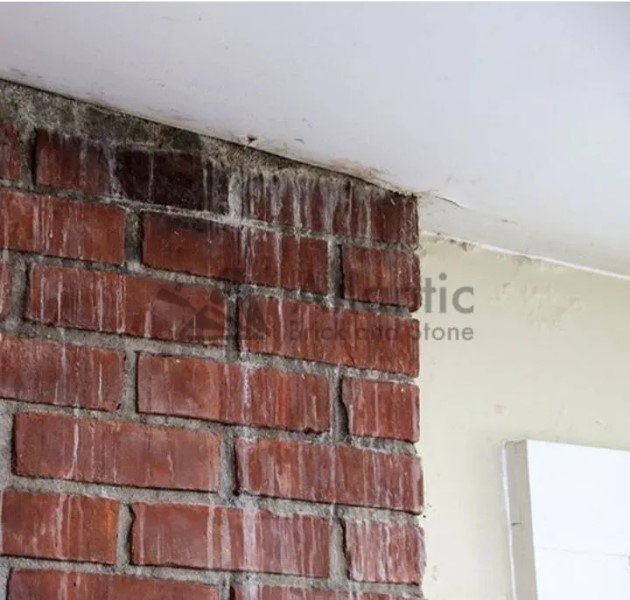You’ve likely noticed that damp, musty smell in the basement or seen telltale water stains on the ceiling. Figuring out where unwanted moisture is coming from can seem puzzling at first. However, understanding the typical routes water takes to infiltrate homes is key to prevention. Let’s walk through how moisture sneaks inside, common sources, and strategies to stop it in its tracks.

Masonry buildings, constructed primarily from materials like concrete blocks, bricks, and stones, necessitate a unique approach to moisture protection, distinct from that of wood-framed structures. These porous masonry materials are naturally inclined to absorb water, making proper sealing essential to prevent water saturation behind the walls. Over time, the mortar joints that connect these masonry units can deteriorate, weakening the building’s water-resistant barrier.
Special attention is required at the junctions where different masonry materials converge, such as the interface between foundation walls and floor slabs. These areas are particularly susceptible to moisture penetration and should be thoroughly sealed during construction.
Regular inspections of these transitional areas are crucial to identify and address any cracks that could facilitate moisture ingress. Furthermore, parapets, which are commonly found on roofs, can accumulate standing water and should be regularly monitored to ensure they are not compromising the building’s water resistance.
Masonry structures are particularly susceptible to moisture issues from nature due to their porous composition. Heavy rain or snow-melt saturates unprotected wall surfaces if not redirected quickly by functioning roof drainage systems. The weight of accumulating water can also stress or crack aging mortar joints over decades. Seasonal humidity fluctuations cause condensation indoors too as moisture in the air condenses on cooler stone and block surfaces. All of these natural factors require ongoing mitigation strategies.
Even man-made systems jeopardize masonry envelopes if not properly installed and maintained.
All of these interior and exterior sources supply water that penetrates masonry porous materials if not rapidly shed. Mortar joint erosion and structural deterioration then manifest, requiring expensive remediation. Regular system checks prevent saturation issues before damages arise.
Chimneys provide an opening for moisture to penetrate from flashing failures or cracks in the masonry structure itself. Flashing installed between the chimney and roof is meant to direct water out and away but frequently deteriorates over time from heat exposure. Missing sealant allows water to seep into wall cavities or attics during heavy rain. Regular inspection and repointing of mortar ensure chimney structures remain intact.
Windows and doors double as entry points for moisture if not installed correctly. Faulty weather stripping permits rain to be driven into cracks around frames during strong winds. Over time, wood components like sills collect debris and lack proper sealing at mortar joints. Check caulking integrity and reapply as needed to maintain an impenetrable barrier.
The brick and stone in older buildings serve an aesthetic purpose but can crack under pressure. Minor fractures allow water intrusion but may worsen when left unaddressed. Settlement stresses mortar bonding to failure, and temperature fluctuations contribute annual widening. All fractures require patching to restore the weather-resistant shell.
Parapets at roof edges are hidden collection points for moisture. Debris and plant growth can prevent timely drainage, causing water pooling. Repoint cracks and ensure downspouts direct water away from foundations. Regularly clear parapet surfaces of organic matter to eliminate lingering puddles.
No addition should alter historical drainage patterns. Soil in constant contact with concrete or block weeps moisture inward. Cracks at the juncture between foundation walls and floor slabs often form, allowing capillary action. Installing French drains intercepts infiltrating water before it damages structural elements.
Behind finished walls, plumbing leaks go unnoticed as they cause hidden damage. Check under sinks and behind washing machines for corroding lines. Hissing sounds or damp areas signal the need for a meticulous inspection to pinpoint and repair compromised plumbing.
Masonry is durable, but it is not immune to moisture-related issues over time. Initially, these problems might not be evident, but if left unaddressed, they can lead to significant repair costs.
Prompt professional evaluation of any signs of wetness is crucial. Addressing these issues early helps preserve the structure and indoor air quality, avoiding costly repairs in the future.
With masonry, catching issues early means sealing entry points before damage manifests inside.
Condensation mitigation through proper ventilation and dehumidification likewise shelters interior materials from chronic dampness.
If you are noticing any signs of water intrusion in your building, it’s time to call your local masonry company to find out what is causing it and to discuss a repair solution before it’s too late.
For over 15 years, Atlantic Brick and Stone has been the trusted name in masonry repair for residential and commercial constructions in Fredericton. Our team is experienced in addressing all types of moisture complications that can arise in brick, stone, and concrete constructions.
Atlantic Brick and Stone believes in getting to the root cause of issues, not just treating symptoms. We involve structural engineers on every project to conduct comprehensive evaluations. This ensures any infiltration sources are identified and the appropriate repair strategy is developed.
Paying moisture issues in masonry buildings proper attention now spares future costs and problems down the road. Catching signs early allows less invasive repairs. With regular maintenance inspections catching gradual failures, moisture will continue shedding outward as intended. Taking proactive steps outlined helps manage sources and preserve your architecture’s longevity for generations to come.
GET STARTED
Create stunning structures with our residential and commercial masonry services in Fredericton. From meticulous designs to the completed build, our process is professional and rewarding, and we can’t wait to build your dream with you.
Atlantic Brick and Stone, one of the best masonry contractors in Fredericton, NB
Contact
8 Muskie Street, Lower Kingsclear, New Brunswick E3E 0E7, Canada